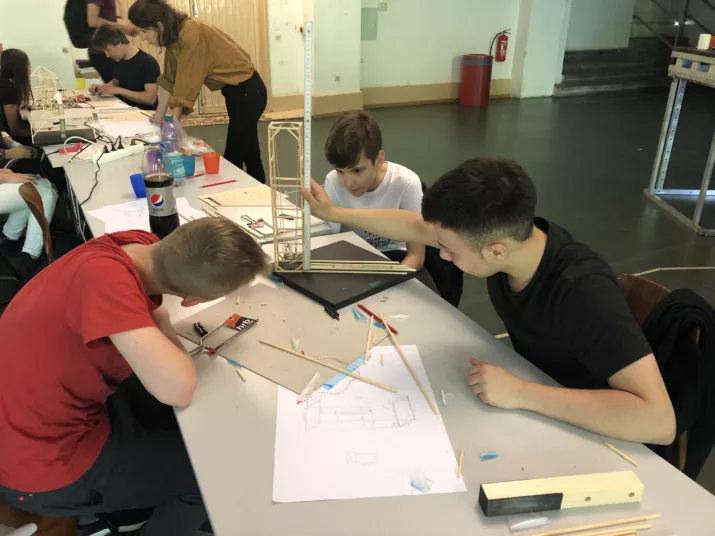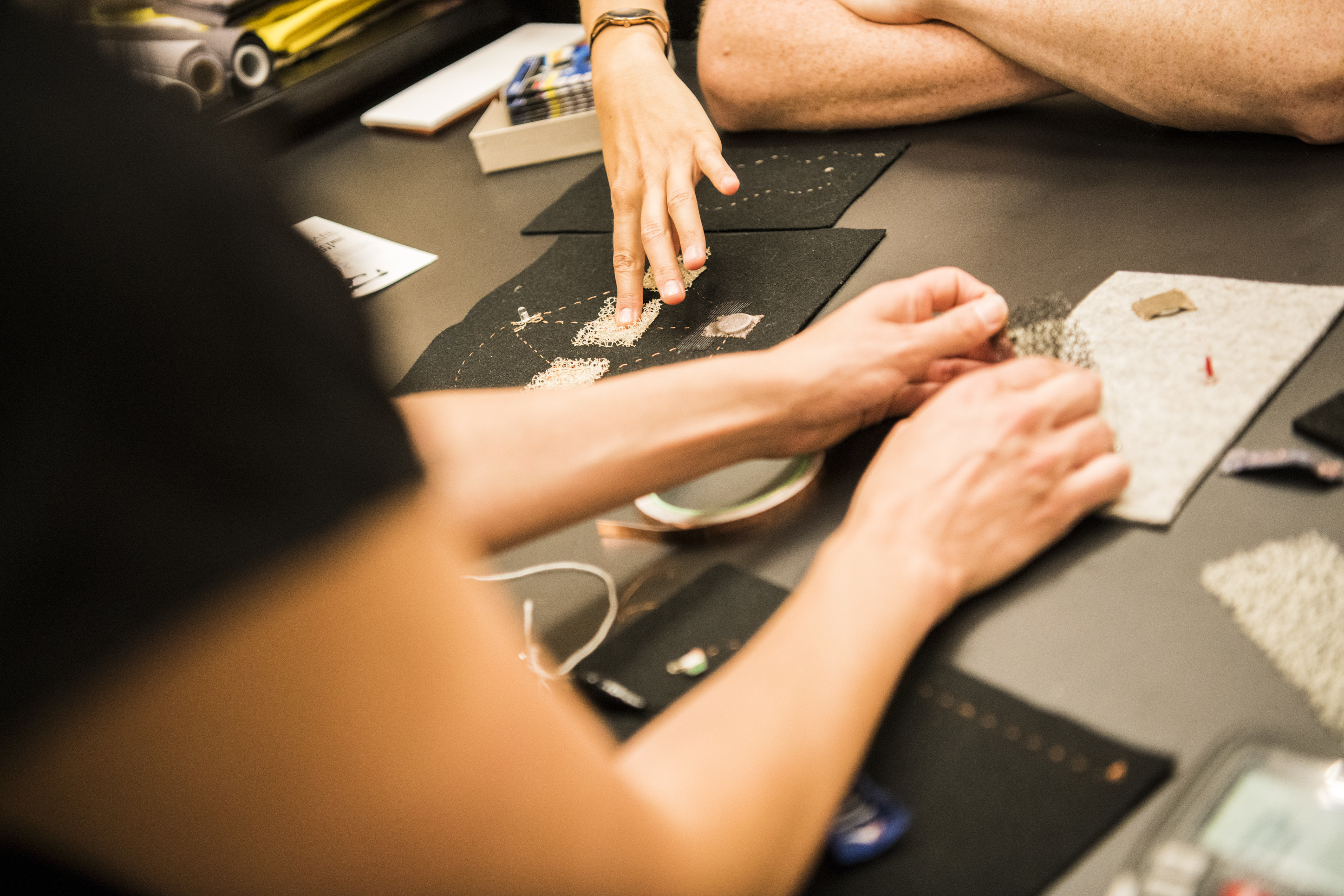
Futurium
Berlin’s school pupils form their visions of a city of the future
Flying High and Diving Deep
Catapults that hurl people into the air, aqua domes for living in the sea, a network of cable cars high above the roofs – this is how Berlin’s school pupils imagine the city of the future. They formed their visions as part of the Parkaue project “The Smarter City” – jointly organised by Theater an der Parkaue (Berlin’s state theatre for children and young people), the design agency studio milz and Futurium.

Futurium
“The catapult hurls people 200 metres into the air. Once they’re up there, people can fly anywhere they want,” Vladimir, Dan and Daniel explain their model of a smart city. The team of three has created the catapult on a model scale, using wood, glue and acrylic glass. Annika and Thu Phuong believe that dry land will slowly disappear so that, by 2050, people will be living under water. Large domes will then be used to separate the cities of the future from the surrounding water.
The Futurium Lab was one of a total of six locations where school pupils laid the foundation stones for the city of tomorrow. The young people were supported by artists, city planners and programming professionals. A presentation in the city park next to the theatre brought the festival to an end.
No nails, no glue – just wood
Andreas Picker and Simon Deeg from ‘studio milz’ accompanied the pupils of Manfred-von-Ardenne-Gymnasium in Lichtenberg during the ideas stage at Futurium. The two are developers themselves. Their invention is the Joyn Machine, an intelligent woodworking machine that enables the designing and semi-automatic sawing of structures involving wood. In the final step, the wooden slats only need to be inserted into each other and fixed with pegs. Et voilà: a bench, a chair, a scaffold, but neither nails nor glue – just plain wood.
From the design of a wooden structure to the processing of the raw material and the production of wooden parts, this ‘all-in-one’ concept has been made possible by the close integration of software and hardware components, but also by the design of the tool itself. At just 100 kilos, the Joyn Machine is even transportable.
Pavilion in the Futurium Lab
“We believe in a future in which humans and machines can work together and produce things that they themselves need – be it at home or on the move,” is how the creators describe their vision. Access to means of production should be democratised.
Simon Deeg and Andreas Picker are currently building a pavilion for the Futurium Lab’s Showcase. It will be there in the pavilion that, from 5 September, visitors will have a chance to encounter ideas for architectural designs that can be implemented by applying just the “right dose of technology”.
